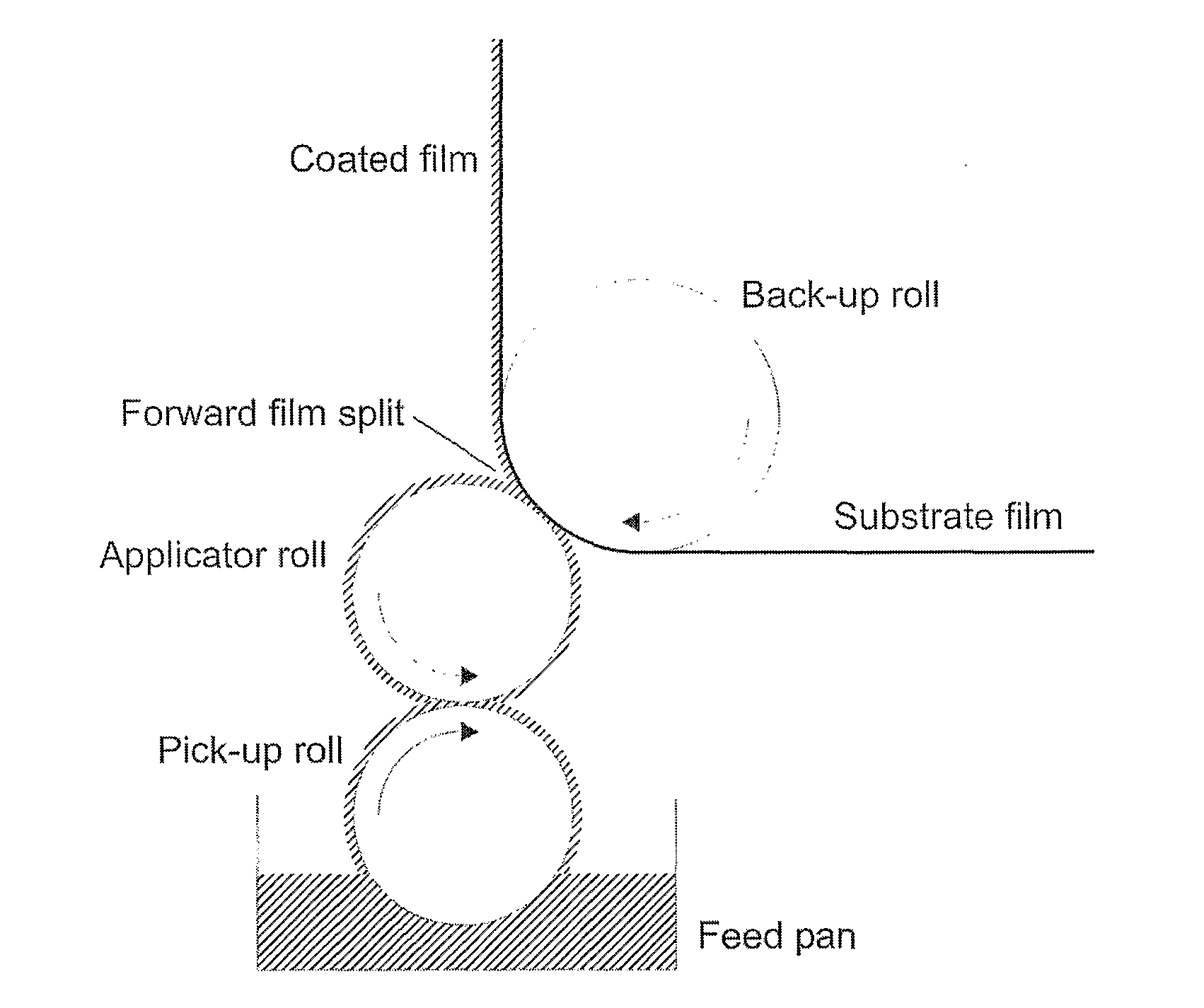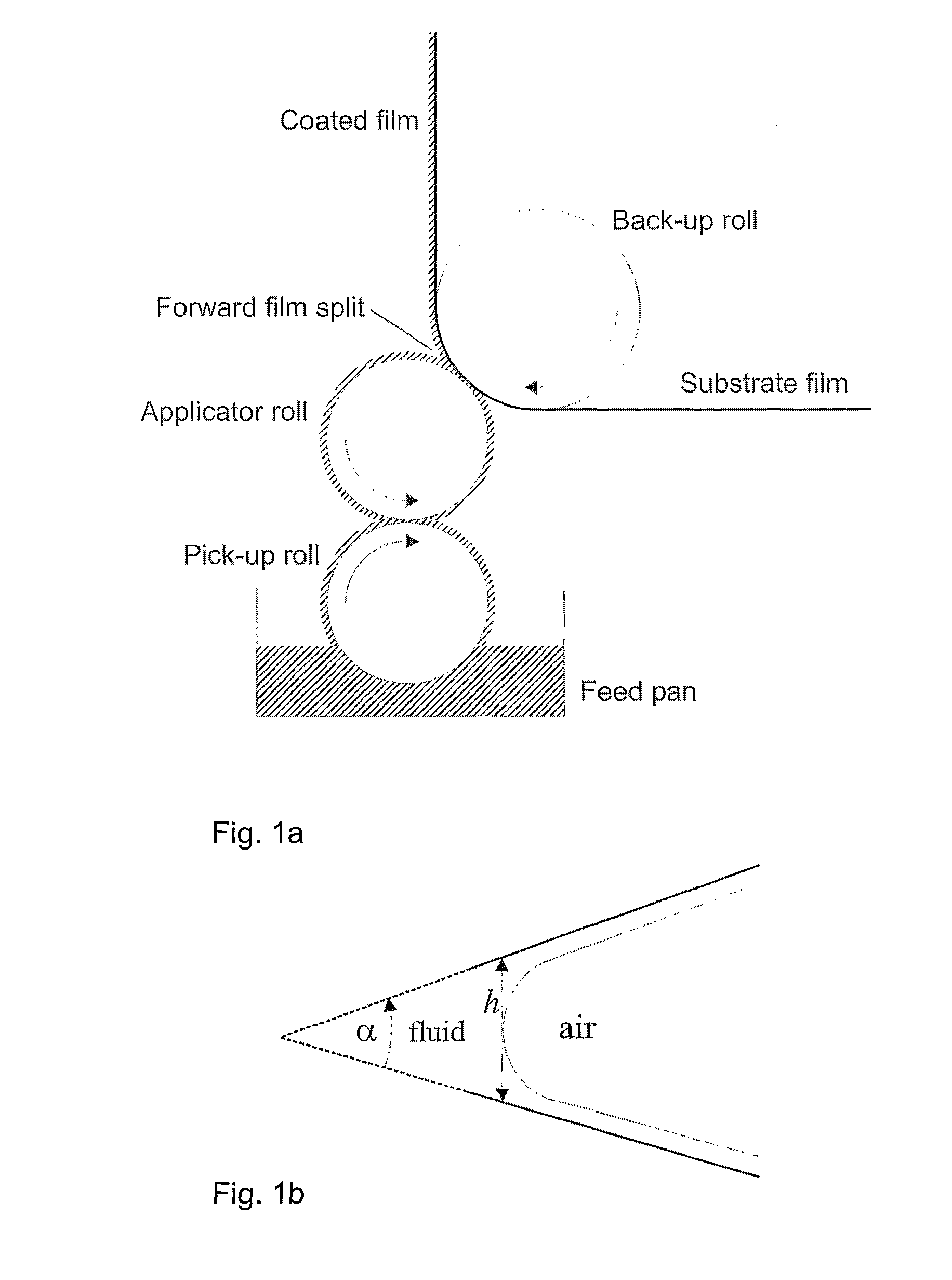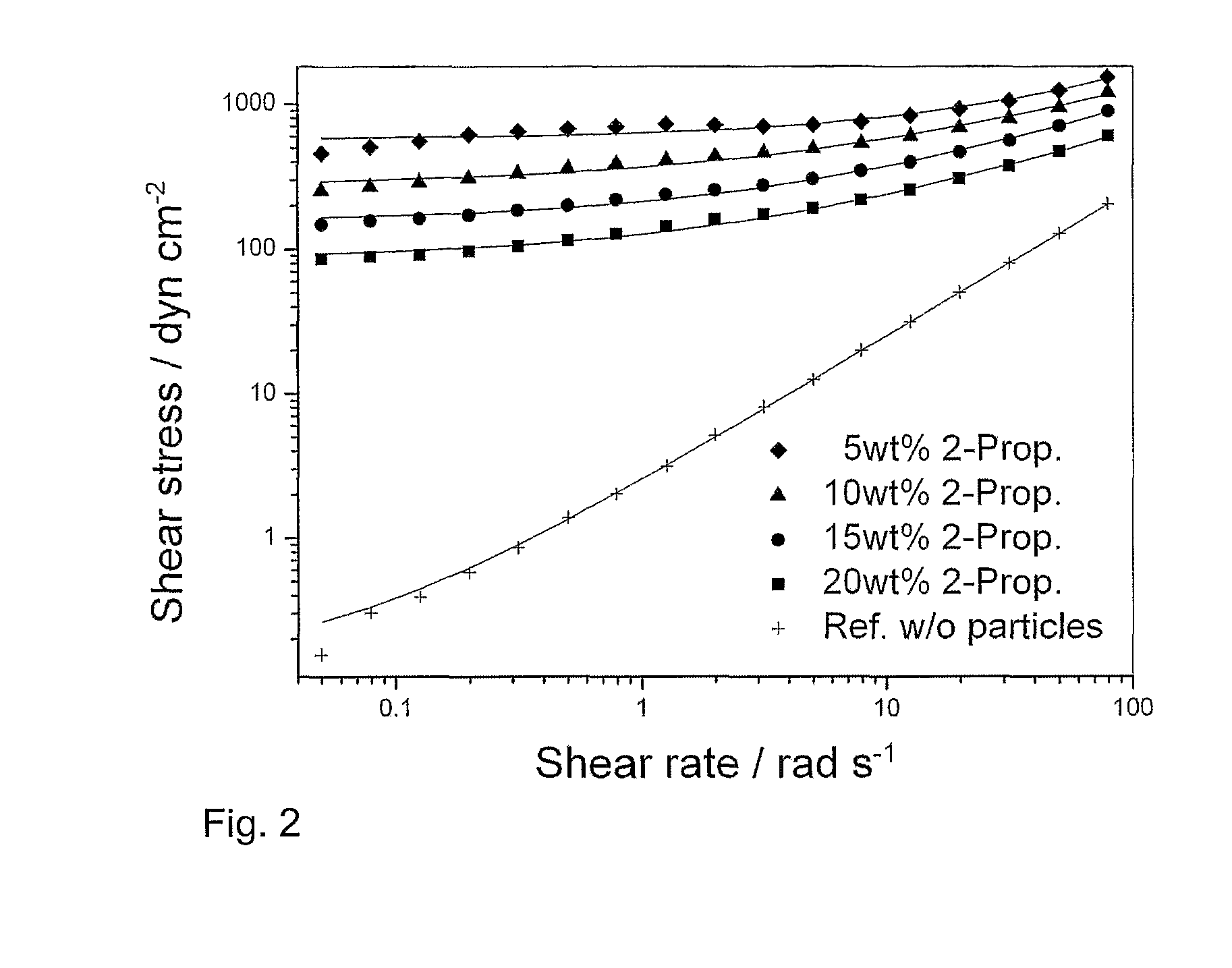Method for the Application of a Structured Coating Upon a Smooth Surface
a technology of structured coatings and smooth surfaces, applied in the direction of coatings, thin material processing, pretreatment surfaces, etc., to achieve the effect of easy formation
- Summary
- Abstract
- Description
- Claims
- Application Information
AI Technical Summary
Benefits of technology
Problems solved by technology
Method used
Image
Examples
examples
1. Film Preparation
[0066]A solventless silicone coating system, based on poly(dimethylsiloxane) (PDMS), was used as a basic raw material with the following weight proportions: 4700 parts Dehesive® 610 (Wacker Silicones), 270 parts Crosslinking Agent V24 (Wacker Silicones), 140 parts Catalyst OL (Wacker Silicones), and 10 parts 2-methyl-3-butyn-2-ol (Fluka) as an inhibitor. In the preparation method of the resin, 5 wt % silica (Aerosil® 200, Degussa) was first added to the silicon base and mixed with a conventional agitator till proper dispersion was reached. Different amounts (5 wt %, 10 wt %, 15 wt %, 20 wt % of the total resin mass) of 2-propanol (Fluka) were then mixed with the modified silicone resin. Finally the inhibitor, the crosslinker, and the catalyst were admixed and the resulting resin was applied on a high density polyethylene film (150 μm film thickness) by the aid of a laboratory scale three roll direct coating machine (FIG. 1a) with co-rotating rolls (forward roll ac...
PUM
| Property | Measurement | Unit |
|---|---|---|
| yield stress | aaaaa | aaaaa |
| viscosity | aaaaa | aaaaa |
| viscosity | aaaaa | aaaaa |
Abstract
Description
Claims
Application Information
 Login to View More
Login to View More - R&D
- Intellectual Property
- Life Sciences
- Materials
- Tech Scout
- Unparalleled Data Quality
- Higher Quality Content
- 60% Fewer Hallucinations
Browse by: Latest US Patents, China's latest patents, Technical Efficacy Thesaurus, Application Domain, Technology Topic, Popular Technical Reports.
© 2025 PatSnap. All rights reserved.Legal|Privacy policy|Modern Slavery Act Transparency Statement|Sitemap|About US| Contact US: help@patsnap.com



